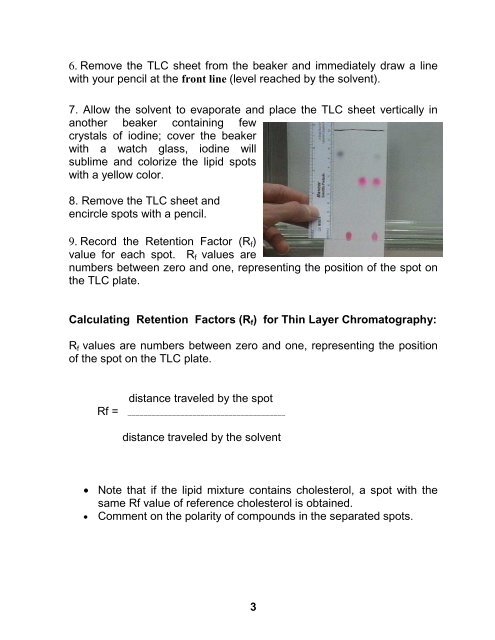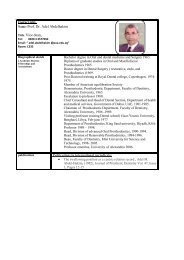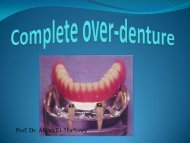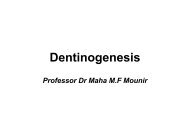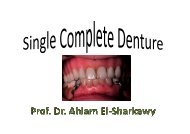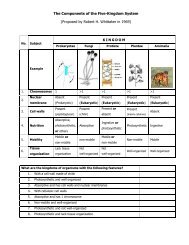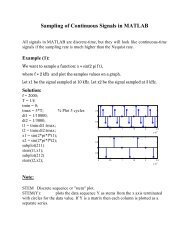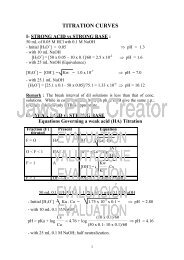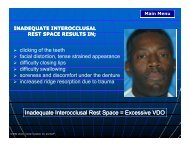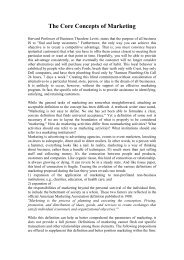BCM 112 BIOCHEMISTRY I âThin-Layer chromatography (TLC)â
BCM 112 BIOCHEMISTRY I âThin-Layer chromatography (TLC)â
BCM 112 BIOCHEMISTRY I âThin-Layer chromatography (TLC)â
You also want an ePaper? Increase the reach of your titles
YUMPU automatically turns print PDFs into web optimized ePapers that Google loves.
6. Remove the <strong>TLC</strong> sheet from the beaker and immediately draw a line<br />
with your pencil at the front line (level reached by the solvent).<br />
7. Allow the solvent to evaporate and place the <strong>TLC</strong> sheet vertically in<br />
another beaker containing few<br />
crystals of iodine; cover the beaker<br />
with a watch glass, iodine will<br />
sublime and colorize the lipid spots<br />
with a yellow color.<br />
8. Remove the <strong>TLC</strong> sheet and<br />
encircle spots with a pencil.<br />
9. Record the Retention Factor (R f )<br />
value for each spot. R f values are<br />
numbers between zero and one, representing the position of the spot on<br />
the <strong>TLC</strong> plate.<br />
Calculating Retention Factors (R f ) for Thin <strong>Layer</strong> Chromatography:<br />
R f values are numbers between zero and one, representing the position<br />
of the spot on the <strong>TLC</strong> plate.<br />
distance traveled by the spot<br />
Rf = _______________________________________<br />
distance traveled by the solvent<br />
• Note that if the lipid mixture contains cholesterol, a spot with the<br />
same Rf value of reference cholesterol is obtained.<br />
• Comment on the polarity of compounds in the separated spots.<br />
3


